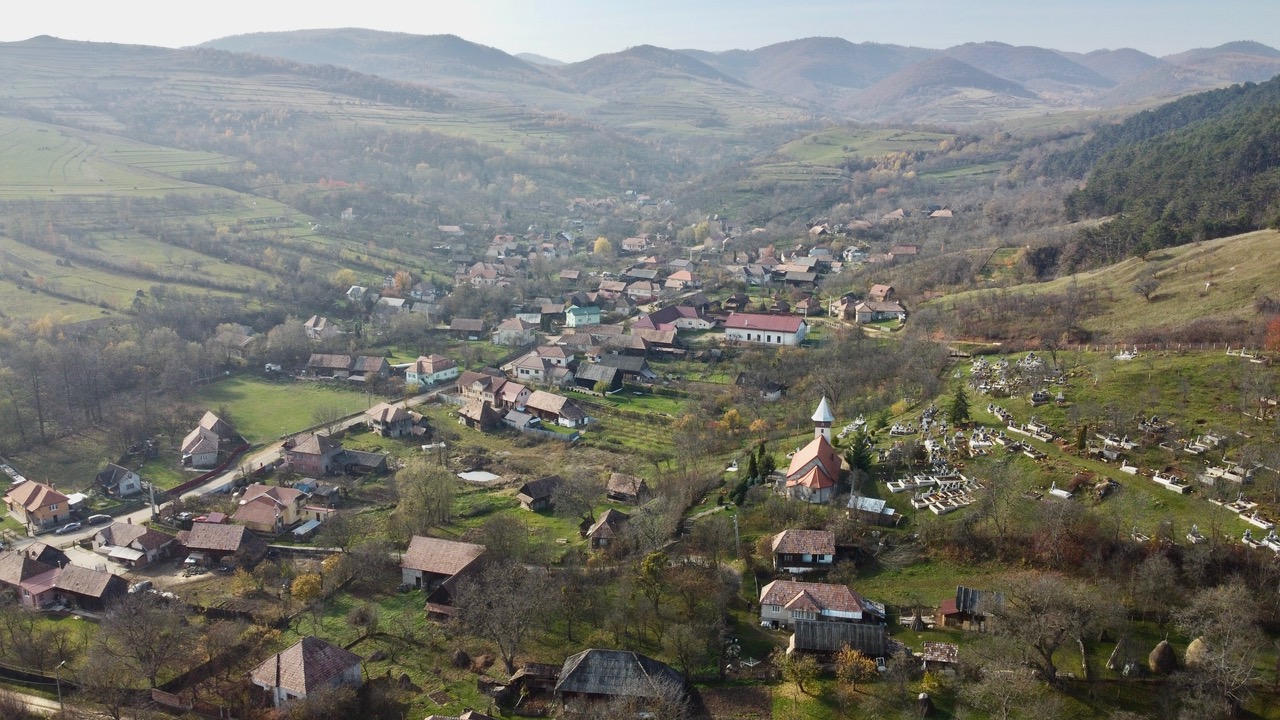Hășdate
Hășdate
Hășdate is one of the settlements of the municipality of Săvădisla in the Aries river basin. The village, situated at an altitude of 596 metres at the foot of the Muntele Mare, takes its name from the stream that flows through its border. According to linguists, the name of the stream Hășdate, formerly Hasadát, is linked to the fact that it flows through the Turda gorge. The water name is a derivative of the Hungarian verb hasad (roughly translates as „to crack” or „to split”) and actually refers to a rocky gorge about 25 km from the village. The Romanian name of the stream is a recent variant of the Hungarian name.
According to oral tradition, the village was founded by families who had fled from Vlaha. However, according to the authors of the village monograph, the village is much older, its inhabitants having moved to the mountains as a result of the overpopulation of the regions close to the Arieș river. In the Middle Ages, the village belonged to the manor of the Léta fortress, and its inhabitants were engaged in farming and transporting goods from the castle’s estates. It was first mentioned in written records in 1456 as Hosdath, and in 1648 as Hesdat. In Romanian it is recorded as Heșdatiea in 1857 and then as Hăşdate from 1909. The village belonged to the counties of Cluj, Turda and Turda-Arieș.
In the 1733 census of the Greek-Catholic Bishop Ioan Inocențiu Micu Klein, it is stated that there are 30 Greek-Catholic families living in the village, who have a church and a priest. According to the census of 1784-87, there were 126 families and 734 people living in 97 houses in the village. The 1850 census counted 134 houses, 828 inhabitants, including 814 Romanians, one Hungarian and seven Romani. Of the inhabitants, 821 were Greek-Catholic and seven Roman Catholics. The village’s population converted to Orthodoxy in 1948, when the Greek Catholic religion was banned.
According to oral tradition, the first church in the village was built of wood and no longer exists. Its present stone church was built in 1805 and dedicated to the Archangels Michael and Gabriel. The village also has a Pentecostal community with a prayer house.
The village used to have a private school, which became a public school in 1924. At the end of the Second World War, a Romanian platoon was formed in the village, which on 5 September 1944 confronted the Hungarian troops marching past the village. In the three-hour battle, which ended with the local fighters retreating, four locals were killed and three wounded.
The population of Hășdate was 911 Romanians at the time of the 1977 census, 653 Romanians in 1992, 578 (574 Romanians, 3 Hungarians) in 2002, 479 (454 Romanians, 7 Hungarians) in 2011 and 422 (365 Romanians, 13 Hungarians) in 2021. In 2021, 338 of its inhabitants were Orthodox, 19 Pentecostal and 6 Roman Catholic.
The village has a Romanian-language kindergarten and primary school, and is in the process of building a water and sewage network. About half of the streets are paved with asphalt.
The inhabitants
0
The first documentary attestation
0
- UAT Săvădisla
- 1,020
Contact
- Main Street, No. 35, Săvădisla Commune, 407505, Cluj County
- +40 264 374 275
- +40 264 374 275
- primsav@yahoo.com
Useful



